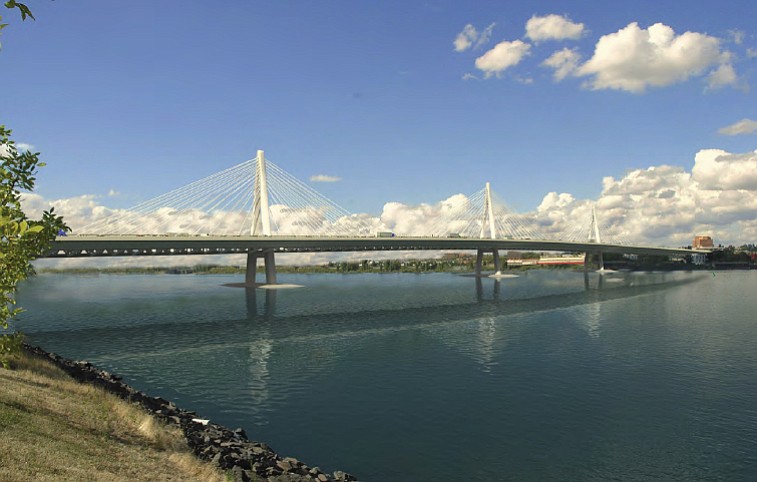A majority of Vancouver city councilors on Monday signaled an interest in a cable-stayed design for a new Interstate 5 bridge across the Columbia River.
However, councilors said they were concerned that they didn’t know enough about how the new alternative design would affect the city’s revitalizing downtown, highway connections and a major new riverfront development. Mayor Tim Leavitt underscored the stakes, noting that the new bridge will have a lasting imprint on the city “for as long as any of us are going to be alive, that’s for sure.”
Govs. Chris Gregoire and John Kitzhaber are pushing for state transportation agencies to make a recommendation by next week.
“This is a point where the governors don’t want us to dilly-dally,” CRC co-director Don Wagner told councilors. “They want us to move at a pace that is rapid.”
The governors are due to press the case for the multibillion-dollar project with U.S. Transportation Secretary Ray LaHood by the end of this month during a visit to Washington, D.C.
Leavitt and city councilor Jeanne Harris, who serve on a Project Sponsors Council advising the governors, are seeking the council’s direction before a pivotal sponsors council meeting on Friday. The bridge design recommendation is likely to carry great weight as state and federal transportation planners finalize design for the overall $3.6 billion crossing project.
“Once that’s chosen, unless there’s a fatal flaw, that’s what it’s going to be,” Councilor Jack Burkman said.
State officials are scrambling to respond to the Feb. 3 recommendation of a 16-member Bridge Expert Review Panel commissioned by the governors.
The panel chaired by Utah-based transportation consultant Tom Warne offered a choice of tied-arch, cable-stayed and composite deck truss designs. The panel found that each design would be cheaper and more durable than the CRC team’s old open-web box girder design, largely because the panel straightened the bridge’s alignment. The governors agreed with Warne’s panel to kill the open-web box girder design.
All options have a minimum 95-foot-tall clearance above the water, enabling boats to pass without stopping traffic for a bridge lift.
The old CRC alignment envisioned the bridge bending in a broad arc downstream from the current I-5 bridge. Warne’s panel calculated that straightening the bridge — saving money on raw material and requiring fewer piers — would bring $10 million to $100 million in savings. However, a straight bridge across the river may require engineers to bend the freeway on land.
That could mean one of two things in Vancouver: a hairpin turn not unlike I-5’s notorious Terwilliger curves in Portland, or bending the freeway even farther into downtown Vancouver — a scenario that would likely wipe out the 6-story West Coast Bank building.
“It seems pretty obvious at first glance that those would be the only two options we have,” Wagner said in a previous interview with The Columbian.
However, on Monday, Wagner told Vancouver city councilors that engineering work is continuing and that it may be possible to build a cable-stayed design while minimizing impacts to downtown. Councilors asked for updates by the end of the day Thursday, so that Harris and Leavitt can offer a more informed opinion about the bridge type.
The choice will have numerous ramifications.
Thayer Rorabaugh, the city’s transportation planning director, noted that the cable-stayed design puts the pedestrian and bicycle path on an upper deck between northbound and southbound lanes — about 35 feet higher than the old open web design. It will take much longer ramps on either end of the bridge to ensure pedestrians can reach the path’s 140-foot-tall apex above the water on a slope that complies with the Americans with Disabilities Act.




